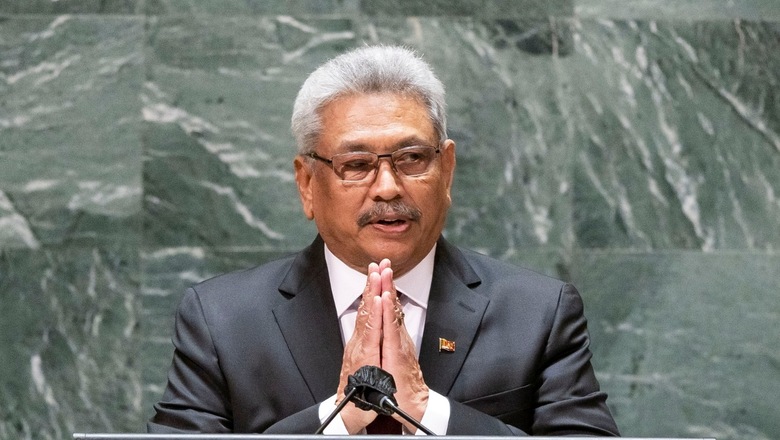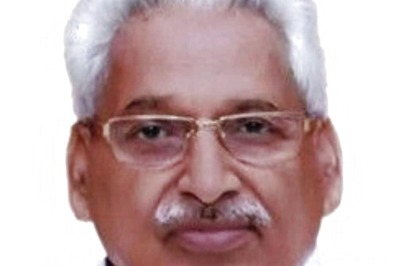
views
Much has been written about the economic crisis staring at Sri Lanka and most of it ends up blaming the incumbent government of President Gotabaya Rajapaksa and excludes the role of the previous regimes since the country’s Independence in 1948. Question is should India bail out the strategically located southern neighbour, why and how.
Sri Lanka’s economy was designed to implode from time to time, and that has happened without fail at every turn. Unlike on previous occasions, this time round, the global COVID-19 pandemic hit the forex-centric economy so hard that it will continue to reel under its effect for years and decades to come, even if it overcomes the current crisis.
Living beyond the means is the cause for the nation’s economic crisis. Add to that the criss-crossing of socialist and western capitalist models with each change in government, and there was a sure recipe for disaster. In a way, it was not even a hybrid model as one would expect. Suffice to say that the socialist model in its early avatar nationalised everything in sight. The return of the capitalist model in the seventies led to import of even milk powder and fruits in what essentially is still an agrarian economy.
Successive governments could play around with the economy as long as revenues from tourism and forex remittances from Sri Lankan labour in the Gulf and house helps and trained nurses in Europe kept coming. COVID-19 put a sudden end to that. Two years earlier in 2019, the Easter serial blasts, which claimed 269 lives, including at least 40 foreigners, had killed the tourism industry already.
Added to all this was the extended political crisis, at the centre of which were former President Maithripala Sirisena and his ever-estranged Prime Minister Ranil Wickremesinghe. The Constitution gave Sirisena the upper-hand, but people’s mandate gave more parliamentary seats to Wickremesinghe, for what on paper remained a coalition government. Rather than unveiling graft and scams of the predecessor Rajapaksa government of war-victor President Mahinda Rajapaksa, the ruling coalition, calling itself fancifully the Government of National Unity (GNU), indulged in equally bigger fiscal scandals.
Rajapaksa Contribution
It is not as if the Rajapaksas did not do enough to mess up the economy which was already in an irretrievable position. Rather than tightening the belt, Mahinda as President (2005-15) opened the flood-gates of government spending, compelled as he was by what his advisers felt was a war-time need of keeping the people with the government.
Thus the number of government jobs was doubled again to 1.3 million or so, after being trimmed down drastically in between by political rivals while in power. Identifying the neglected rural masses as a traditional constituency that actually needed succour, the Rajapaksa government then went on to lay roads and electrify southern Sinhala-Buddhist villages at a massive scale.
Then there was the ubiquitous China hand, starting with the much-hyped Hambantota Port construction-cum-concession, which the Sirisena-Wickremesinghe duo (2015-19) converted into a 99-year lease, but the promised relief from the Chinese debts did not seem to have come about. The government also continued borrowing more from China, for creating massive road infrastructure that could have waited, or could have been spread out over years and decades.
Worse still, for the billions incurred in debt, the Chinese design did not provide for jobs to Sri Lanka’s millions, nor a boom to local infrastructure industry, like cement plants. Like elsewhere and unlike India, the Chinese brought in their equipment and construction material and also labour. In economic terms, all the indebted money went back to China, dime for dime, with only economically non-productive infrastructure left to remind the nation of its indebtedness. No one wanted to be reminded, nor did anyone remember it.
To this, incumbent President Gotabaya Rajapaksa, who was elected for a five-year term in 2019, made his own contribution. As if to cover up the impending forex crisis, worsened by the COVID pandemic, he sugar-coated a disastrous step of stopping imports overnight by talking about ‘organic farming’ — but without taking the required first steps and precautions.
While the import-ban affected most other industries and supplies, including pharmaceuticals, the sudden switch-over to organic farming without having any stock in hand to supply the nation’s farmers has killed two birds with one unintended stone. One, the farming industry, including forex-earning tea trade, is in doldrums. Two, there is no food on the plate for the common man, cutting across classes, castes and ethnicities.
It had begun with the South Asian food-constant turmeric, which used to be imported from India, but went on to include equally essential sugar and rice. At one point, Gotabaya ordered a ‘food emergency’ and a military veteran drawn in to head the civil supplies network brought out huge stocks hoarded by black-marketers. Once that phase ended, it was all back to square one.
The worst was the later-day realisation that hiding behind Gotabaya’s ‘bold and innovative’ organic farming project was a secret deal to import massive quantities of organic fertiliser, yes, from China, which however was rejected by his own agro-scientists as unsuitable to local conditions. After an open-spat in which the Chinese Embassy in Colombo announced the black-listing of a government bank for not honouring suppliers bill, the Gotabaya government has since decided do pay up a huge $6-plus million, that too in these times of crippling forex crisis.
Not Self-sustaining
There is no denying that borrowings almost trebled during Mahinda’s first term (20015-10). However, there was no ‘war-time crisis’ after 2009 when the LTTE was routed; no successor-government has tabulated the economic benefits flowing from the decade-old peace. There is a national economic crisis that goes beyond the Rajapaksa label for which a sustaining solution may exist in a new economic approach that exploits inherent local advantages to address the ever-expanding national aspirations in this era of ever-informative social media.
That is for Sri Lanka and Sri Lankans to address. The immediate question is what can India do as a larger neighbour in every sense of the term, including economy. Here, there are also structural issues unlike China, which began expanding its economic arm only after deepening its pockets. Not just Sri Lanka, all of India’s neighbours, including adversarial Pakistan, are not economically viable entities if one were to provide for their national ambitions and individual aspirations.
India, despite looking relatively larger and stable in economic terms, is still a developing country. It has to measure what it can give others and also evaluate the return on investments at every turn. In the case of Sri Lanka and the rest, New Delhi has been using Chinese strategic intrusion as a measure to give and not-to-give. It is yet to get the timing right. With the result, there is always the lurking anticipation, what if the recipient government still swears by Chinese strategic interests, albeit surreptitiously.
For now, India has the much-delayed Trincomalee oil tanks farms deal with Sri Lanka, in return for funds that could meet Colombo’s immediate forex needs. But that nation will need much more in the New Year, having to pay back $7.5 billion in dues to debtors and treasury bond investors. Now that COVID third wave has gripped the world – it is a fourth and in some places a fifth wave in Sri Lanka – there is little or no hope for the Sri Lankan economy to recover soon, leave alone revive.
What India has thus won through the Trinco deal is only a tactical advantage on Sri Lanka’s Trinco front. The ruling Rajapaksas in particular have declared their intention not to go to the IMF for fear that accepting their conditionalities would make their government unpopular with the masses (not that they are popular any more). Instead, they are ready to pledge Sri Lankan sovereignty and territory as they are not enrolled as voters.
A clearer picture will emerge when China’s Foreign Minister Wang Yi visits Colombo later this week (January 8-9). Apart from extending a much-needed $1.5-billion currency swap, but only after as much delay as India’s, China can now be expected to fish even more in the troubled Sri Lankan waters. What China has to offer and what more it expects Sri Lanka to pledge are not yet known, but that seems to be the only source of external forex for Colombo right now.
The reasons are not far to seek. Mindless printing of local currency over the past month shot up monthly inflation by 13 per cent in December 2021, with food inflation touching an all-time high of 22.1 per cent. This cannot go on. Anyway, restrictions on remittances through private money changers have not helped boost the reserves to comforting levels.
Therein lies the clue and also the hitch for New Delhi. It has to ponder its ‘Neighbourhood First’ policy to make real sense of all that is happening with respect to the medium- and long-term.
The writer is Distinguished Fellow and Head-Chennai Initiative, Observer Research Foundation. The views expressed in this article are those of the author and do not represent the stand of this publication.
Read all the Latest Opinions here


















Comments
0 comment